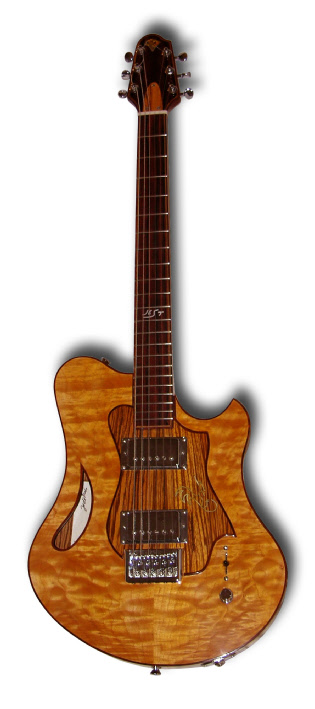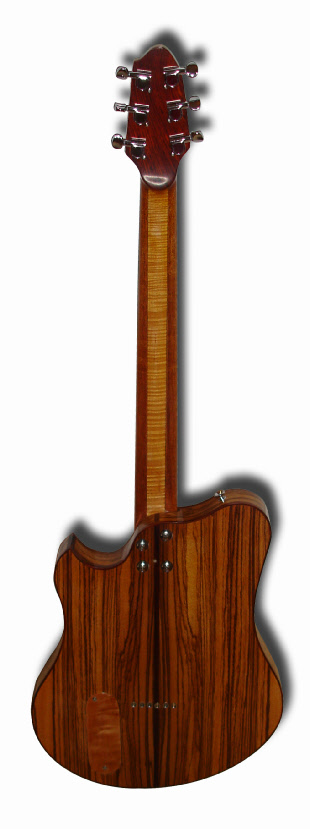This is the first of the guitars that I have built with this body style. The body
is a thinline semi-
The body, sound hole, neck, and peg head are bound with cocobolo. My standard JeSt inlay at the 12th fret, and the jester inlay on the pick guard, are done with aluminum wire. The peg head inlay is abalone shell and wire.
By bending the sides rather than forming the body from a solid slab, as is conventionally done, I can lighten the body, since the sides are very thin. It also results in a different visual appearance, since there is no end grain anywhere on the body. The only downside (other than it is harder to do) is that I can’t incorporate body contours, such as forearm taper and tummy cut.
Pickups are PAF style Schaller humbuckers. Controls include a three way pickup switch
and a stacked volume and tone control. The semi-


and back peg head laminations are cocobolo. My standard JeSt inlay at the 12th fret, and the jester inlay on the pick guard, are done with aluminum wire. The peg head inlay is abalone shell and wire.
wire. The peg head inlay is abalone shell and wire.
All in all I am happy with this model. It is light, resonant, and looks good. In fact, you will see that I repeated it with variations on the next guitar.